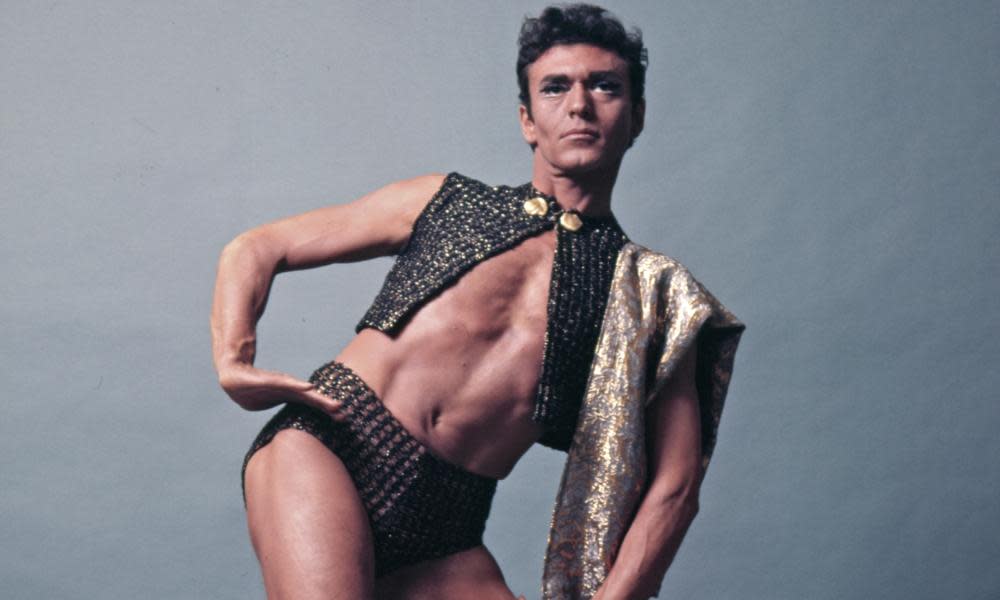Robert Cohan: mesmerising master who changed the course of British dance

In the 1970s, Robert Cohan would arrive at the studios of London Contemporary Dance Theatre in silver platforms and sunglasses, the dashingly handsome and charismatic New Yorker a galvanising director who inspired great dedication from his dancers. The last time I met him, in 2019, he was 93 and still an inspirational presence. Choreographing a new piece for Yorke Dance Project, he sat quietly and observantly in the corner of the room like a black-clad sage. His every word in the studio seemed like a gift to the dancers. Wise, calm, warm and funny, he passed on nuggets from his own teacher, Martha Graham, with whom he danced before setting up the first contemporary dance school and company in London and changing the course of British dance.
Cohan, who has died aged 95, was a dancer, choreographer and artistic director, but most importantly and enduringly, an adored teacher. He drilled movement deep into dancers’ bodies, but they came to him for the psychology and the philosophy of dance along with the steps. Not just what you do, but why. Soul and spirit were part of his teaching. For him, dancing was about awareness, intention, sympathy; showing the secrets of movement, he told me once.
In the rehearsal room a few years ago, I watched students mesmerised by him. They were 21st-century dancers, exposed to myriad choreographers, for whom Graham technique is old hat, but they all looked as if a light had been switched on. The intensity of focus, the rigour, the attention, spoke to something deep inside them. And it was hard: long, slow balances, perfectly tuned angles (exposed all the more by the skin-tight Lycra they’d wear to perform), and the tight affinity of the partner work. The physical challenge was immense, but, while I was there, the thing Cohan spent the most time working on was the specific quality of breath needed in a series of pliés (one of dance’s most basic steps, bending the knees).

The dancers then were working on a revival of his 1977 work Forest, an entrancing, understated work accompanied by amorphous sounds of nature. There was strength and stealth in their bodies, moving purposefully across the empty stage. Cohan’s choreography was all based in Graham’s technique – rooted in the earth, powered by the solar plexus – but with less myth, angst and psychodrama. There was often a simplicity and directness about the choreography that belied how fiendishly difficult it is to perform.
Cohan was very serious about the importance of dance – of good dance. There was something very pure about his dedication to the art, and also completely unpretentious. He believed contemporary dance was for everyone and some of his works had pleasingly readable concepts – such as Cell (1969), a piece for six dancers trapped within white walls; Class (1975), based on the exercises of a dancer’s daily class and designed as a way into the technique for new audiences; or Waterless Method of Swimming Instruction (1974), in which dancers in swimming gear performed synchronised aquatic moves to a hot jazz soundtrack. The set looked like an empty pool on the deck of a 1930s ocean liner and the mood was wry, witty, a little kitsch (an inspiration for Matthew Bourne, perhaps), but the movement was exacting, thoughtful and elegantly beautiful.
Nymphéas (1976) was another watery work, inspired by Monet’s Water Lilies, the dancers embodying impressionist brushstrokes with dreamy fluidity, its simplicity transporting. Stabat Mater (1975), set to Vivaldi, was more austere, full of strong, stark lines, opening with one woman standing completely still in the spotlight, but communicating depths, as the music sings of Mary weeping at the foot of the cross.
These works are rarely performed nowadays, but even without seeing the choreography, Cohan’s imprint on the generations of dancers and teachers who followed him is indelible.


